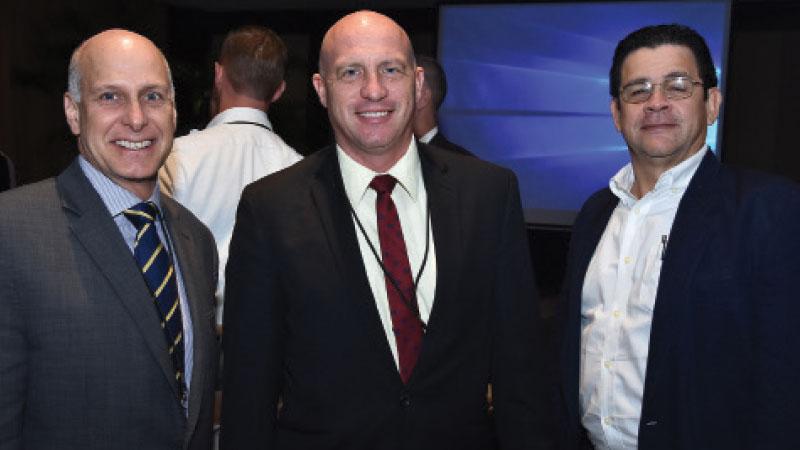By Mike Jarrett
Information and data were presented under the following topics:
• Tier 1/2 oil spill and fire-fighting response by Jim Elliott, Chairman American Salvage Association
• Incident management planning for oil spills by Cdr. Keith Donahue, Rac/Rempeit-C
• Tier-3 oil spill response by Paul A. Schuler, Director Regional External Affairs, Oil Spill Response Ltd.
• Past hurricane season relief efforts – lessons learned by Capt. van Eerden, Commander of Dutch Navy frigate Zr. Ms. Pelikaan
• Salvage operations in hurricane-affected ports by Cesar Corcuera, T&T Salvage, Panama
• After the perfect storm: rebuilding a cruise destination by Alexander Gumbs, Port of St. Maarten and Julie-Anne Burrowes, Onboard Marketing Inc.
Track 2 gave participants an opportunity to review and discuss trending techniques and strategies for disaster management and response.
The impact of major disasters on the national economies of the region is increasing and most territories are too small to deal with the risks alone. To react effectively and quickly, ports and governments must adopt integrated disaster management planning, which has a wider scope than port areas alone. Such an integrated plan must include stakeholder risk and impact assessments, and a tiered approach to preparing for and reacting to disasters.
Plans must include procedures to upscale to higher alert levels and, when events escalate, outside international help must be engaged. These plans need to be prepared, and all private and public sector stakeholders involved must be trained. For example, plans must be drafted to quickly bring in tier-3 oil spill equipment. All sorts of customs, immigration and permit arrangements must be in place and tested so as to facilitate the quick deployment of outside equipment and personnel to affected locations.
The same is true for outside military assistance in the case of natural disasters like earthquakes and hurricanes. Such assistance must be requested by officials and authorities in ‘good time’, because government services and communication systems may not be functional at the time such permits are required.
Procedures can be established by way of diplomatic channels and international or regional organisations that can assist and make requests within pre-set limits and frameworks. Once these are in place, local governments can assume their role of maintaining public order and directing aid and assistance to where it is most needed. Seaports and airports must play a key role in these plans.
PMAC can assist its member-ports to: (a) bring together stakeholders on the regional level; (b) assist in updating and distributing national disaster management plans; and (c) oversee regional drills and exercises in preparation for hurricane seasons.
REGIONAL DISASTER MANAGEMENT PLANS
PMAC should perhaps pursue discussions regarding establishment of regional disaster management plans for vulnerable areas, to include multiple ports that can assist each other when needed. This would require more from the Association, in terms of staffing and planning capacity, but there are several regional and international institutions willing and able to assist the Association in this matter.
A hurricane season regional planning committee and regional meeting, some two to three months before the start of the hurricane season, could be a useful tool to start this process of regional planning and cooperation.
Regional best-practices regulation guidelines for hurricane-proof infrastructure – including building and setting up joint risk-planning and insurance tools (in cooperation with insurers and re-insurers) – were also suggested by Track 2 participants as possible topics for the second PMAC-Portside Caribbean Port Management Workshop, to be held in Jamaica in January 2019.
CRUISE PORTS
The same holds for repair or rebuilding of cruise ports and tourist destinations following a major disaster. The cruise industry has been very quick to respond to such disasters and their message has been coherent and in line with the interests of the region: the Caribbean is in business and still a safe destination for travel. Direct communication with individual cruise lines and industry associations is crucial in getting this message across: ports and destinations are open for business. If done properly, cruise vessels can return within three to four months after a direct hit.
*Designer/moderator of Track 2.

